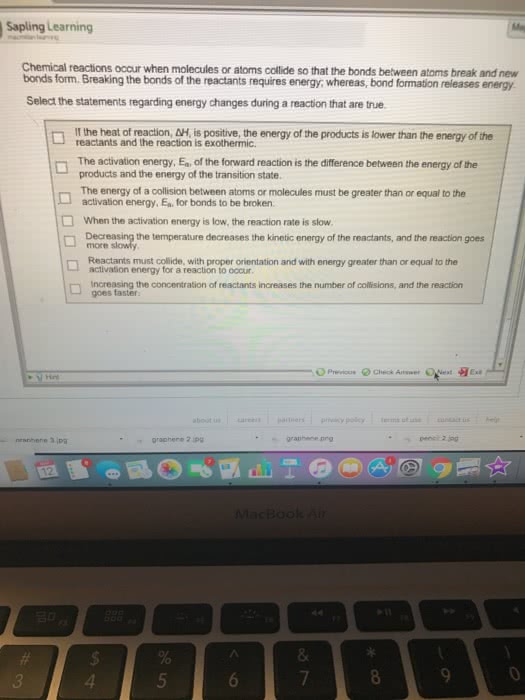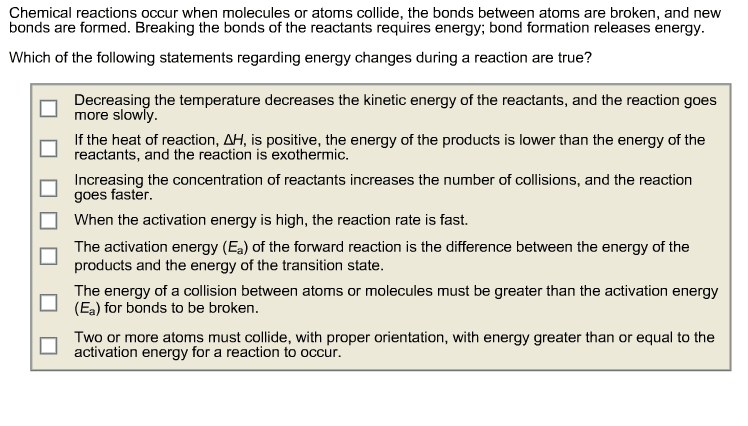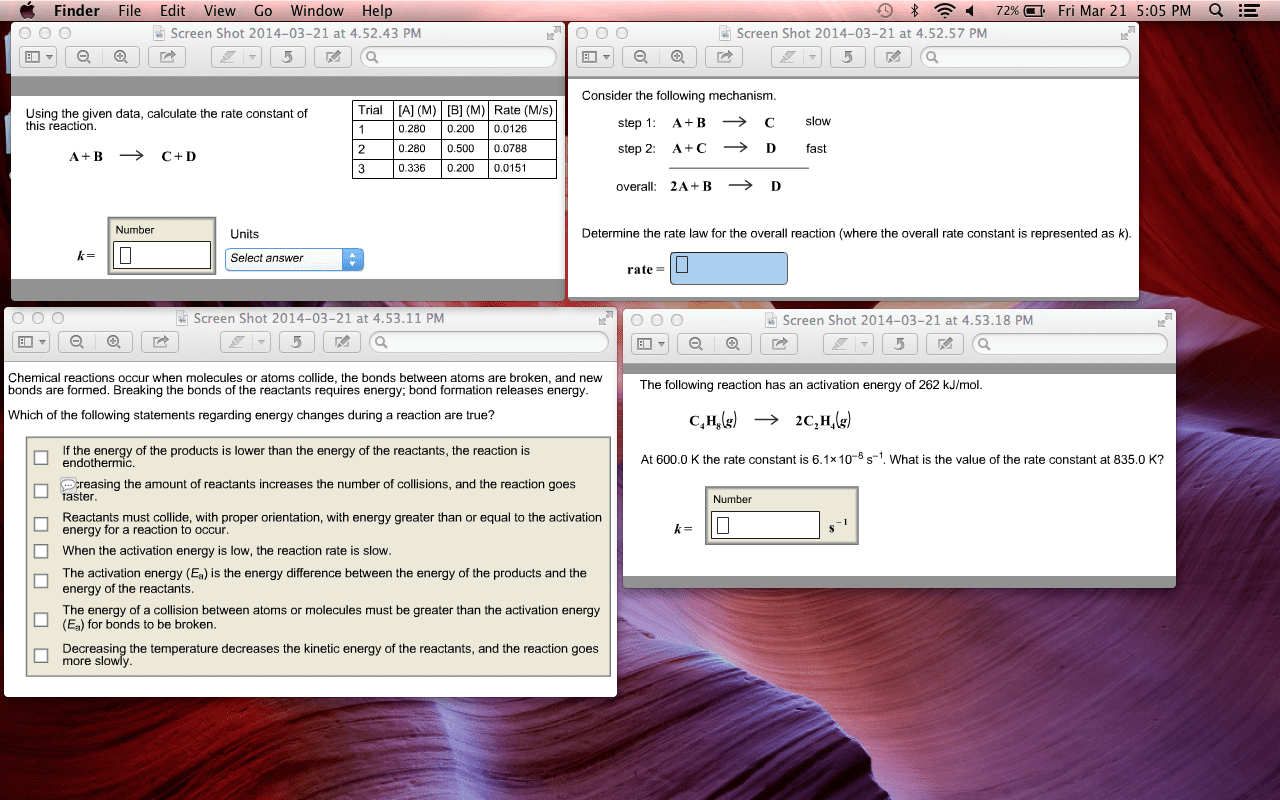CHEM 112 Lecture Notes - Lecture 4: Enthalpy, Reaction Intermediate, Activation Energy
Document Summary
Increasing temperature increases number of molecules with increased energy. High activation energy-slow reaction, most molecules do not have enough kinetic energy to climb the chemical hill. Low activation energy- fast reaction, molecules do possess enough kinetic energy to climb hill. Graph describing reaction progress with respect to energy of reactants and products. Transition state- top of the hill (top of activation energy) can be signified as equal sign with vertical line through the middle of it, has maximum energy of the reaction. Has reaction intermediate, where the material is product, but not final product. Still has transition states at the top of each hill. Reaction intermediate is essentially a reactant for the 2nd step but a product of the first step. Change in h can still be calculated. Positive value indicated endothermic for each step there is a transition state. Short lived in special cases it can be observed. As temperature increases starting molecular energy increases.




